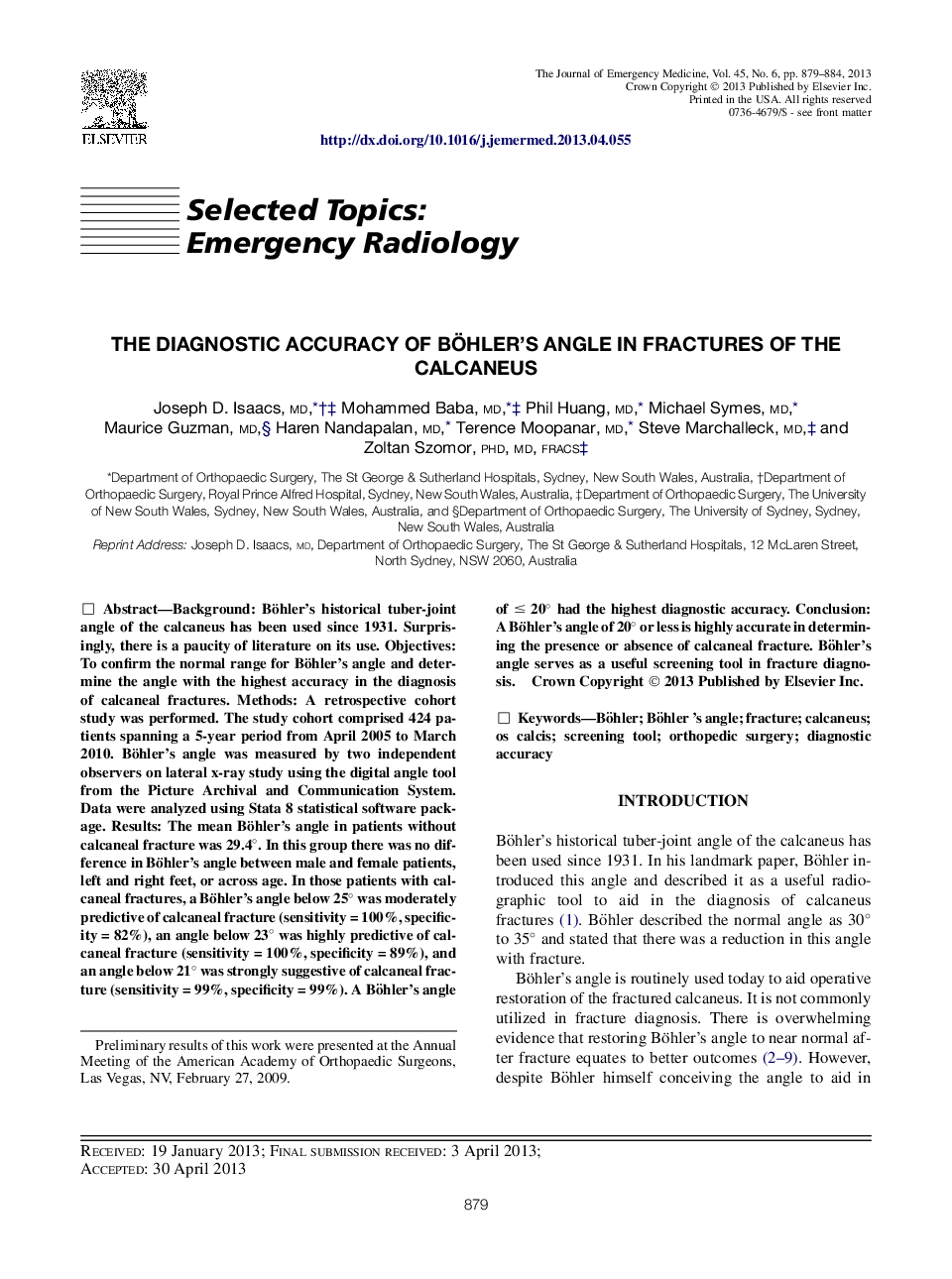| Article ID | Journal | Published Year | Pages | File Type |
|---|---|---|---|---|
| 3246509 | The Journal of Emergency Medicine | 2013 | 6 Pages |
BackgroundBöhler's historical tuber-joint angle of the calcaneus has been used since 1931. Surprisingly, there is a paucity of literature on its use.ObjectivesTo confirm the normal range for Böhler's angle and determine the angle with the highest accuracy in the diagnosis of calcaneal fractures.MethodsA retrospective cohort study was performed. The study cohort comprised 424 patients spanning a 5-year period from April 2005 to March 2010. Böhler's angle was measured by two independent observers on lateral x-ray study using the digital angle tool from the Picture Archival and Communication System. Data were analyzed using Stata 8 statistical software package.ResultsThe mean Böhler's angle in patients without calcaneal fracture was 29.4°. In this group there was no difference in Böhler's angle between male and female patients, left and right feet, or across age. In those patients with calcaneal fractures, a Böhler's angle below 25° was moderately predictive of calcaneal fracture (sensitivity = 100%, specificity = 82%), an angle below 23° was highly predictive of calcaneal fracture (sensitivity = 100%, specificity = 89%), and an angle below 21° was strongly suggestive of calcaneal fracture (sensitivity = 99%, specificity = 99%). A Böhler's angle of ≤ 20° had the highest diagnostic accuracy.ConclusionA Böhler's angle of 20° or less is highly accurate in determining the presence or absence of calcaneal fracture. Böhler’s angle serves as a useful screening tool in fracture diagnosis.
